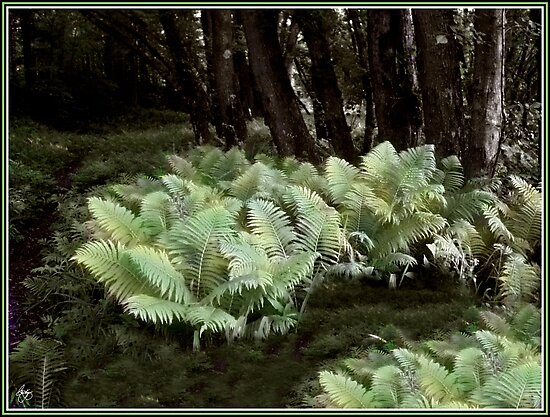
Rob Wipfler - Co-Director Kingswood Camp
Director Lake Tarleton Coalition
Zack Porter,
Standing Trees, zporter@standingtrees.org
In 2000 a coalition of people including elected officials, volunteers and environmental organizations rallied to save an especially unique area in the Moosilauke region that was threatened by development and logging. Lake Tarleton is the largest lake in the White Mountain National Forest today and one of the few that has never had problems with invasive species.
Today the area is once again under threat, this time from the very agency that was charged with caring for it when $7.5 million in public and private funds secured its preservation. This is not the first time that the forest service has been charged with acting like a man with an ax whose only solution to a problem is to cut. Furthermore, it is not at all clear that the forest service would have been chosen to manage the property had the organizations and citizens who rallied to save the lake and its surroundings known that it would thoughtlessly place this gem in the box of rocks that is the lowest level of protection offered within the White Mountain National Forest.
With fewer than two weeks before final submissions are due proponents of a plan to give greater “Scenic” protection to the Lake Tarleton Watershed area are making a final push buoyed by an Earthday Executive Order from President Biden encouraging the development of Old Growth Forests that on the face of it runs contrary to the actions of the White Mountain National Forest administration.
I spoke with Zack Porter of St. Johnsbury-based Standing Trees organization as well as Rob Wipfler, Co-director of Kingswood Camp for Boys on Lake Tarleton who is also the Director of a newly formed Lake Tarleton Coalition.
https://www.vnews.com/Lake-Tarleton-logging-proposal-stirs-residents-concerns-43680591
https://indepthnh.org/2022/03/08/op-ed-support-the-lake-tarleton-coalition/
https://www.concordmonitor.com/My-Turn-Lake-Tarleton-45214438
The Bipartisan Infrastructure Law directs DOI and USDA to specifically prioritize the restoration of old-growth forests, taking into consideration their contributions to landscape fire adaptation. However, there is currently no inventory that identifies the location and condition of mature and old-growth stands.
Take Action:
https://www.standingtrees.org/post/take-action-submit-a-comment-to-protect-lake-tarleton
TAKE ACTION: Submit a comment to protect Lake Tarleton and the Appalachian Trail!
Don't wait. Click here to send a comment today using our Lake Tarleton Action Alert!
by Zack Porter
Last fall I stood on the shore of spectacular Lake Tarleton, gazing out at a snow-capped Mt. Moosilauke, trying to reconcile what I was hearing from the White Mountain National Forest with the incredible story of courage, community engagement, and perseverance that protected the lake from logging and development in the year 2000. I was at Camp Kingswood, a long-running summer camp on the western shore of the lake, to hear a presentation from White Mountain National Forest staff about their proposed Tarleton Integrated Resource Project.
The proposal was jaw dropping: 900 acres of clearcutting and other "even-aged" management from within a short distance of the lakeshore to within a stone's throw of the Appalachian Trail. How could this be possible in a landscape where $7.5 million had been raised, only two decades ago, to prevent logging in the forests surrounding the lake? The public had entrusted the White Mountain National Forest with stewardship of this iconic landscape. That trust was broken.
Majestic Mt. Moosilauke frames Webster Slide and Lake Tarleton. Logging is proposed within 100 feet of the lakeshore to within a short distance of the Appalachian Trail, which runs along the ridgeline in the background of the photo.
As the meeting progressed, tension in the camp's function room escalated. Community members from the surrounding area had gathered indoors on this frigid fall day - at the risk of contracting covid -- to give the White Mountain National Forest another chance. Forest staff attempted to explain how clearcuts would be hard to notice. For a community that had sacrificed blood, sweat, and tears to prevent just such an assault from ever happening, this explanation was difficult to stomach. No amount of rationalization was going to compensate for broken promises.
It was clear that the White Mountain National Forest was unaware of the history of Lake Tarleton; that there had not been any significant attempt to reach out to essential stakeholders in developing logging plans; and that their required analysis of a range of options (known as "alternatives" in the parlance of the National Environmental Policy Act) was nonexistent -- indeed, they failed to consider more than a single option in their Environmental Assessment. A single option analysis isn't an analysis. It's a forgone conclusion. This is illegal.
Approval of the Tarleton Integrated Resource Project seemed imminent, but due to public outcry (thanks to people like you!) and glaring errors in their Environmental Assessment, implementation was delayed last December. The White Mountain National Forest is giving the public another opportunity, through May 11th, to weigh in on their Revised Environmental Assessment.
This will likely be your final chance to submit an official comment. So don't wait - submit today!
Over the past winter, the White Mountain National Forest received letters from more than 1,200 citizens opposed to their logging plans and requesting a new analysis. Instead of listening to public concerns and proposing reasonable alternatives, the White Mountain National Forest's revised proposal, released in early April, is little changed from the original, threatening water quality, endangering wildlife, and putting valuable archaeological resources at risk.
Standing Trees is working closely with the Lake Tarleton Coalition to dramatically curtail or stop the Tarleton Integrated Resource Project from moving forward. The Coalition's goal is simple: put Lake Tarleton on a path to permanent protection as was promised when the White Mountain National Forest acquired the land in 2000. Forest leadership can amend the 2005 Forest Plan at any time to establish a Lake Tarleton-Webster Slide Scenic Area, a fitting designation for this treasured landscape. To this date, no Scenic Areas have been designated in the western White Mountain National Forest. Lake Tarleton should be the first.
Standing Trees won't stop until there is justice for the forests of Lake Tarleton, and for the community that rallied to save this special place just a short time ago.
Zack Porter is Executive Director of Standing Trees
Is clear-cutting U.S. forests good for wildlife?
Critics say the idea that forests should be logged to keep them young so wildlife can thrive is based on flawed science.
https://www.nationalgeographic.com/environment/article/is-clear-cutting-us-forests-good-for-wildlife
In New England, forests protected from logging are capable of storing 2.3 to 4.2 times more carbon than they do now, according to a 2011 report in Forest Science. And a recent study found that old-growth forests in the Pacific Northwest hold nearly twice as much carbon as trees in forests managed for timber production.
Undisturbed soil in old forests traps more carbon too. According to Moomaw, there’s more carbon in the ground in a forest that’s 150 years or older than in the standing trees themselves. That’s because over the decades, annual leaf fall and blowdowns of branches transform into soil that retains ever-greater volumes of carbon.
According to Michael Kellett, co-founder and executive director of Restore: The North Woods, a Massachusetts nonprofit, logging-for-wildlife advocates such as Dave King and Tom Lautzenheiser “are dealing in old science.” He says they “disregard the growing scientific consensus that we need to expand lands and waters that are free of ignorant human intrusion and manipulation.” Kellett says their thinking “is ecologically dangerous.”
Kellett suggests one example of a reality that’s ignored: There are no landscape-scale empirical studies over time and over a large area that show logging is needed for wildlife. “There are numerous anecdotal reports, but no long-term, multi-decadal authoritative studies show that what King or Lautzenheiser say is true,” he says.
“Every day, we work to understand and support the central role forests play in solutions to both the climate change and biodiversity loss crises,” says Michael O’Connor, a spokesperson for Mass Audubon. “If anything, the growing scientific consensus recognizes that habitat heterogeneity, including young forests, is key to long-term forest resilience and to avoiding extirpation of associated species.”
Other scientists are skeptical of young forest logging programs. “There’s no conservation reason for creating more early successional habitat,” says John Terborgh, professor emeritus of environmental science at Duke University, in North Carolina, and one of the world’s top conservation biologists. Clear-cutting trees to expand such habitat, he said, “is a bogus argument, ginned up as an excuse for more logging.”
‘Management for arbitrary human preference’
Kellett believes that the adoption of the logging-for-wildlife idea is cultural landscape nostalgia turned into management practice on public lands. “This whole thing is not to restore natural habitat,” he says. “It’s to maintain a human-created artificial landscape that reflects the lived memory of people alive right now. This is management for arbitrary human preference.”
 |
| Chapel in a Field of Lupine |
Given that young forest habitats open up over long periods from natural disturbances—floods, windstorms, ice storms, insects killing trees, beavers damming streams and creating meadows—why not simply wait and let those disturbances unfold naturally? “And wait 150 years?” says King, adding that he and like-minded managers want to grow wildlife populations for present generations to enjoy.
From this perspective, Zack Porter’s description of logging for wildlife as liquidation for short-term gain—the short-term gain of favoring habitat for species people today want to see and hunt—seems apt.
The more widespread the movement becomes, the more biologists and ecologists are speaking out against it, Kellett says.
"When looked at from a biodiversity perspective, factoring in ALL species (insects, fungi, etc.) the losses are considerable,” says Rick Enser, a conservation biologist formerly with the Rhode Island Natural Heritage Program, writing in an email. “If clear-cutting plans were subject to an environmental impact statement, in which a proper cost/benefit analysis was conducted, it would be very difficult to justify the true costs.”
Enser says he’s spent most of his 30-year career working to make complex scientific issues more understandable to the public. “That job obviously becomes more difficult when you have the supposed experts reinterpreting the science for their own benefit. So, I often use a good basic statement of fact when giving presentations or writing articles—that being Aldo Leopold's quote from the foreword to his Sand County Almanac: ‘We abuse land because we see it as a commodity belonging to us. When we see land as a community to which we belong, we may begin to use it with love and respect.’”
Enser adds, “The only thing that needs to be clarified for people is that their government is abuser #1.
| Ripple of Hope Poster |
For that special someone who loves Newfound Lake. Purchase smaller prints, framed or a poster. Order here
|
 |
| Ostrich Ferns Langdon Woods |
 |
| The Rose and the Headdress |
https://www.standingtrees.org/post/take-action-submit-a-comment-to-protect-lake-tarleton
https://blog.nhstateparks.org/lake-tarleton-state-park/
Wayne King is an author, podcaster, artist, activist and recovering politician. A three-term State Senator, he was the 1994 Democratic nominee for Governor and most recently the CEO of MOP Environmental Solutions Inc., a public company in the environmental cleanup space. His art (WayneDKing.com) is exhibited nationally in galleries and he has published four books of his images, most recently, "New Hampshire - a Love Story”. His novel "Sacred Trust" a vicarious, high voltage adventure to stop a private powerline as well as the photographic books are available at most local bookstores or on Amazon. He lives in Thornton, between Rattlesnake Ridge and the Waterville Range. He proudly flies both the American and Iroquois Flags. His website is: http://bit.ly/WayneDKing















